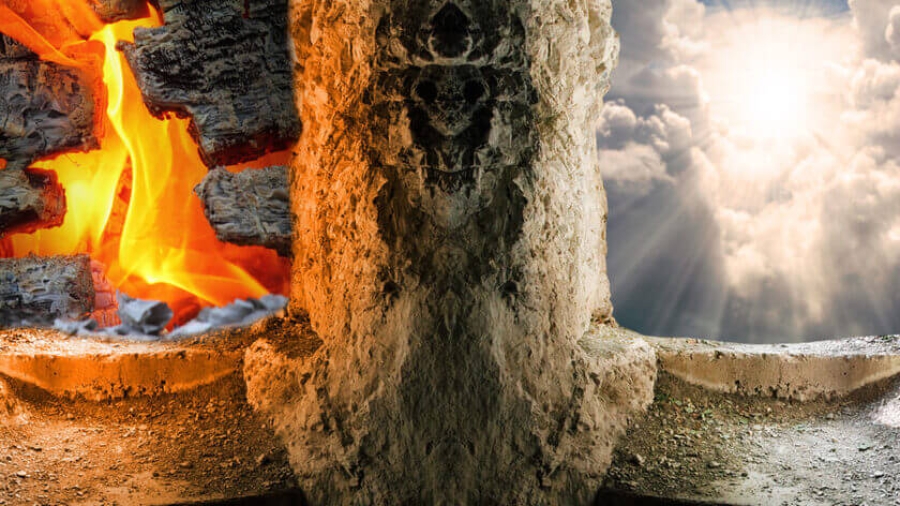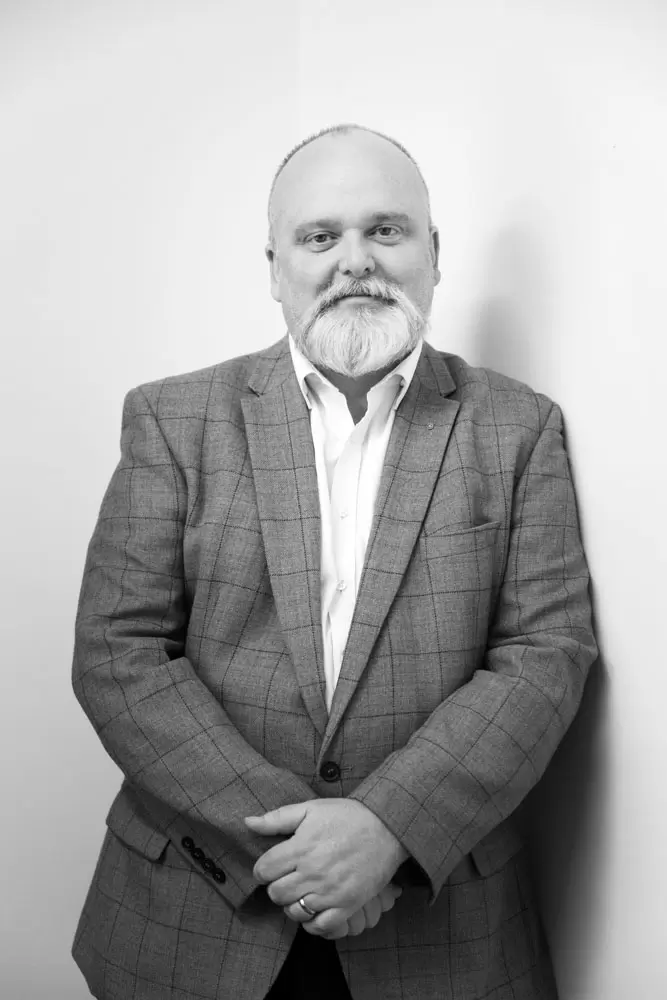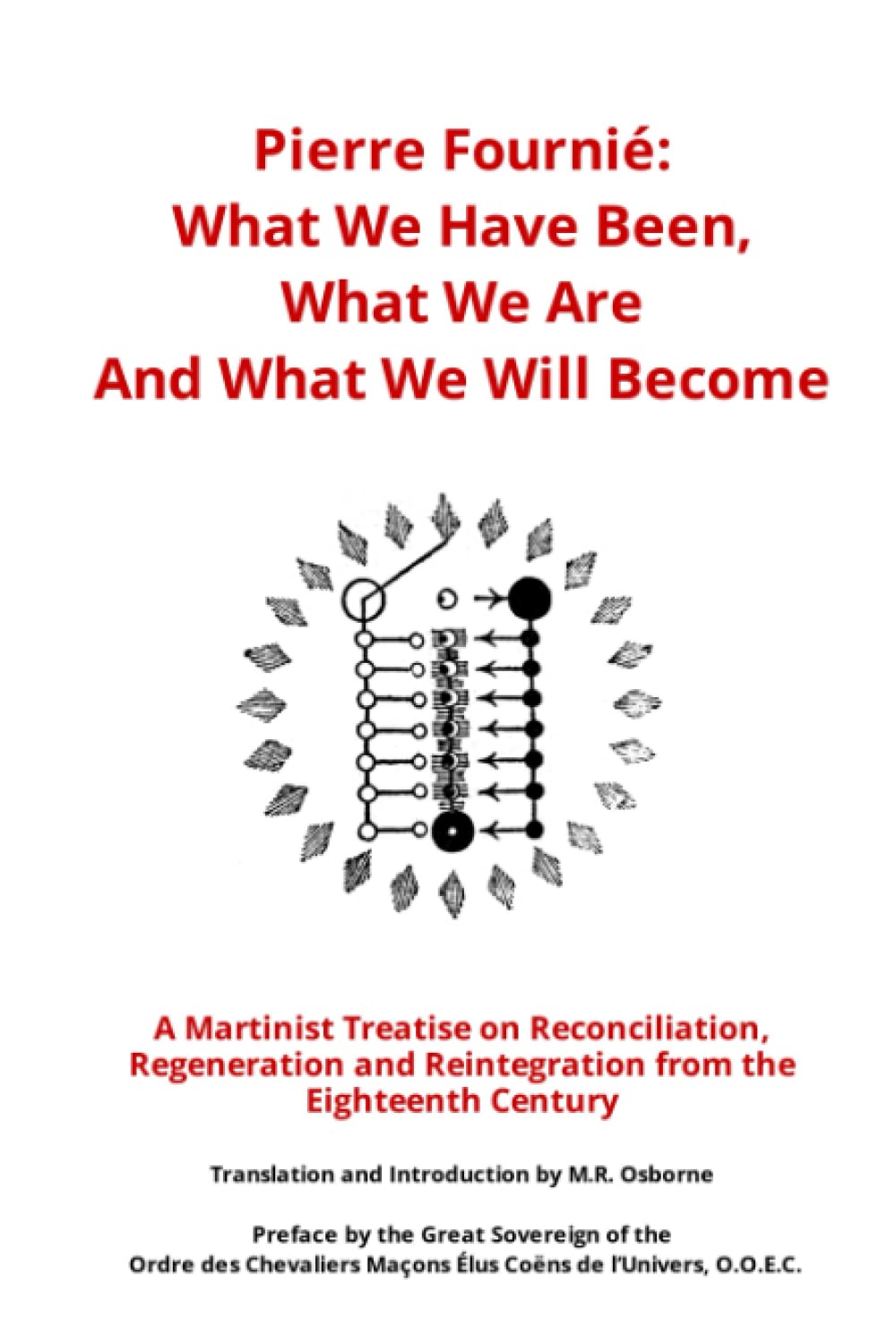By M.R. Osborne
Pierre Fournié wrote his treatise titled What We Have Been, What We Are, And What We Will Become between 1775 and 1801. It was published in England, in French in 1801 and was intended to be the first of two treatises dealing with his metaphysical system. The second volume was never published, although a manuscript may have been written. The first English translation was published in 2022 and is available for purchase from Watkins Books in store or on-line.
Fournié was born in Bordeaux in 1738. It was a busy city of some 130,000 people and home to the largest Benedictine Abbey in France. Bordeaux was a centre of excellence in the era of the Enlightenment and was a progressive city by the standards of the time. There were at least one hundred known Portuguese Jewish families and many foreign Protestants in residence. The city was a huge trading port, the largest in France, and the centre of the commerce triangulaire (slave trade) as well as an important distributor of produce from the Caribbean such as tea, coffee, sugarcane, and cotton. Fournié was not from an affluent family himself, albeit a relatively comfortable one – what we might call lower middle class today. He was the nephew of the Abbott of the Augustinian Priory in Paris, who may have been an influential figure in the young man’s life. Indeed, he was later ordained as a Catholic priest.
In 1761 Fournié joined a Freemasonic lodge. Freemasonry had a very early start in Bordeaux. One of the first lodges in France was established around 1732 as a result of English sailors being present in the city, and by 1761 there were a number of masonic lodges. An interesting point is that Fournié became a Freemason despite the 1738 Papal Bull banning clergy from entering the Craft. In 1768 he was approached by Martinez de Pasqually in the street and invited to join the enigmatic Élus Coëns, an esoteric order comprised of Freemasons practising a form of white magic to banish evil spirits. This tells us a lot about the character of Pierre Fournié, who routinely questions his faith and who lacks a certain confidence in himself. He exhibits very little hubris but did have the temerity to challenge and push himself beyond his comfort zone and step outside religious orthodoxy, notwithstanding he remained a life-long Roman Catholic. This is probably an attribute that attracted Pasqually to him, since in 1770 Fournié became his personal secretary. He continued as a secretary long after the Élus Coëns were formally disbanded by Las Casas in 1780, and for some years after Pasqually’s death Fournié continued to distribute correspondence to its former members.
By 1771 Fournié had taken vows as a clerc du tonsure and continued his obligations as one for the rest of his life. In 1775 he began writing his treatise, but it was not completed until 1801. It took him a long time to complete, and it was interrupted by the French Revolution and the tragic events that followed. From 1789 onwards it became increasingly difficult for clerics to operate in France and in 1792 he fled to Switzerland on the eve of the Reign of Terror, during which the revolutionary government confiscated Church property and executed some 300 priests. He eventually settled in Soho Square, London. He lived as a tenant of diplomatic families and politicians in two or three properties for the remainder of his life, and here completed and published his treatise. He was buried in the vault of the Anglican Church at Saint Pancras New Church.
Fournié’s metaphysics concentrate on the spiritual battle between the forces of good and evil coexisting in our corporeal world. Much of his treatise is concerned with the defence of monotheism and the virtues of moral rectitude, which he sees as the primary defences against the insinuations of evil influences. Fournié adopts an ontological argument for the existence of God, stating that atheism is illogical because God is already ‘proved’ in the conception of a divine being greater than our mind can comprehend. Thus, we possess a concept of God – and not merely an idea of him – which cannot be done if he does not exist. This, he states, is merely a state of ignorance in opposition to knowledge, or truth. God is infinitely great and thus no other entity can surpass his greatness, therefore, Lucifer as a creation of God cannot be God and, this being the case, there is no room for a co-creator or separate agency. Everything that Lucifer teaches humanity is in error in as much as it conflicts with God’s laws and moral rules. He adopts a stoic morality regarding the pursuit of virtue as the only temporal path open to man for his reintegration or reconciliation with God. It is clear to Fournié that the world and the universe were created as a physical confinement to imprison the forces of Lucifer, what manifests from him as ‘Satan’ and his followers (both human and non-human alike). So, for Fournié, the sole objective or guiding principle in life is to discern the will of God by which we can finally free ourselves of Luciferic influences. This is more work than can be achieved in a single lifetime, and so this ‘mixture’ of good and evil extends beyond the confines of this world into the next.
Fournié explains that human beings have a sequence of lives in which we resurrect in physical worlds beyond our own, and where evil continues to exist. This formative battle between good and evil eventually leads to a state of mystical union with God, as if the impurities in metal and being assayed in a fire. He refers to man gradually ascending these worlds as if ‘dematerializing into a non-physical body’ as we spiritualize ourselves in the likeness of God. In Martinistic terms this may be referred to as the tripartite goals of reconciliation, regeneration, and reintegration. It is not reincarnation since he talks very clearly about resurrection as our conscious personality-selves into future worlds. Fournié also talks of the seven gifts of the Spirit as forces acting in opposition to Lucifer misdirecting man in rebellion against God. These seven powers are opposed by what is quite interestingly referred to as ‘Satan’, the seven agents of evil, a collective force which descends from Lucifer and is an Unholy Spirit of bad morals acting in opposition to the virtues which the Holy Spirit imparts.
The treatise itself has very few images. Fournié follows monastic tradition by writing in one long block of text, using repetition to consolidate learning. There are also only three images in the entire treatise of some 300 unbroken pages of text as follows:
Although Fournié does not use chapters and page breaks there is one exception, which is a part of his book he calls “The Explanation of the Image”. This comprises a few pages dedicated to the image below.
Fournié explains that the circular “fire” in the form of the sun surrounding the image designates God who is without beginning or end. The large white globule designates Jesus Christ. The line which starts from the globule by which Jesus Christ is designated extending from God reveals the mystical union of human nature with God:
The other line which starts from the globule, and which crosses the seven smaller white circles placed below it, designates the grace of God for the duration of time. The large black globule designates Lucifer who is separated from God. The line which starts from Lucifer and which crosses the seven black globules placed below illustrates the evil insinuations he suggests to human beings:
In the centre of the black globule is a white dot, which is placed under and between the seven white corpuscles and the seven black ones. This designates the sum of men identified with Lucifer. The white dot at the centre of this globule designates the illumination brought to every man by the coming into this world of the Word who is God made man. The seven white globules placed under Jesus Christ designate the Seven Spirits of God who roam the earth as his servants and support all men to do his will. The seven black globules under Lucifer become Satan and designate the seven spirits who roam the earth as his servants. These are the spirits whom Jesus Christ drove out of Mary Magdalene, and who lead all men to do the very opposite of the will of God:
To quote Fournié:
‘The small white globules which emanate from the Seven Spirits of God are directed against the darts of the seven spirits of Satan and designate the action of the seven as being entirely for God. This is an action which balances and protects us from the seven spirits of Satan, who are all against the truth of God, so that the action of the seven spirits of Satan never reach us beyond the strength that we have to repel them. The darts which leave from the seven spirits of Satan, and which are directed against the action of the seven Spirits of God, indicate the action which balances us in the seven Spirits of God, so as not to destroy our free will. The perpendicular line between the seven and one white blood cells and the seven and one black blood cells has six more or less black globules, which are under an almost entirely white globule placed between Christ and Satan. This designates the path that Jesus Christ traced for us to ascend by practice in order to arrive in unity with God. The dart of Satan is turned against him because God leaves everyone with the free will to either do or not do his will.’
You can see from this explanation just how erudite Fourie’s ability to explain symbology is. There are also many autobiographical references in his treatise, and he remarks that the key to his clairvoyance lay in the experiences he underwent with Pasqually’s Élus Coëns, and which did not cease after the Order’s disbandment. He continued to ‘meet’ Pasqually, his late parents, a deceased sister and another being whom he says was not human (neither was it male or female). These visitations sometimes took place daily and continued for the rest of the Abbé’s life. Fournié tells us that he had visions of Christ on three occasions: before, during and after the crucifixion. He was influenced by Swedenborg’s writings on vitality. If you consider the Swedenborgian layering of reality which is very similar and reminiscent to the seven spheres we have in the above diagram, we can begin to see how Fournié would or could begin to understand his perception of the spirit world in front of him.
MEET THE AUTHOR
M.R. Osborne studied Theology at the University of Birmingham and qualified as a Solicitor, specialising in private equity law. He is a Member of the European Society for the Study of Western Esotericism (ESSWE) and has published academic papers on legal and esoteric matters. His focus is on Rosicrucianism, early Masonic organisation and occult symbolism. In 2017 he won the Societas Rosicruciana in Anglia’s Order of the Companions of Christian Rosenkreutz prize for a series of papers on The Lessons of Lyons. He is also a contributor to the S.R.I.A.’s Flores et Taciturnas digital magazine. He first encountered Martinism and Rosicrucianism on a personal journey of Christian spirituality, discovering a fascinating philosophy of early science and theology almost wholly unknown to mainstream thinking.
mrosborne.co.uk
Bookshelf
Pierre Fournié: What We Have Been, What We Are, And What We Will Become by M.R. Osborne, published by Rose Circle Publications, hardback & paperback (332 pages)










